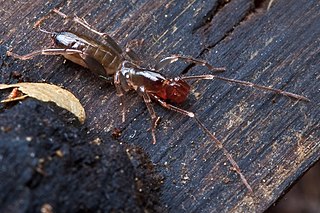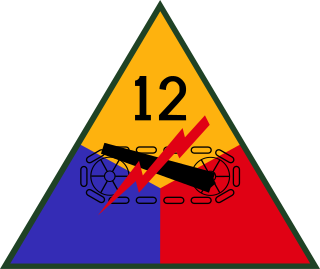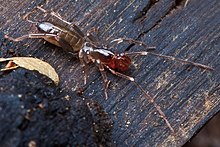
Huntsville is a city in and the county seat of Walker County, Texas. The population was 45,941 as of the 2020 census. It is the center of the Huntsville micropolitan area. Huntsville is in the East Texas Piney Woods on Interstate 45 and home to Texas State Prison, Sam Houston State University, the Texas Department of Criminal Justice, Huntsville State Park, and HEARTS Veterans Museum of Texas.

Schizomida is an order of arachnids, generally less than 5 millimetres (0.20 in) in length.

The Texas Medical Center (TMC) is a 2.1-square-mile (5.4 km2) medical district and neighborhood in south-central Houston, Texas, United States, immediately south of the Museum District and west of Texas State Highway 288. Over 60 medical institutions, largely concentrated in a triangular area between Brays Bayou, Rice University, and Hermann Park, are members of the Texas Medical Center Corporation—a non-profit umbrella organization—which constitutes the largest medical complex in the world. The TMC has an extremely high density of clinical facilities for patient care, basic science, and translational research.

The Houston Museum District is an association of 19 museums, galleries, cultural centers and community organizations located in Houston, Texas, dedicated to promoting art, science, history and culture.

The 12th Armored Division was an armored division of the United States Army in World War II. It fought in the European Theater of Operations in France, Germany and Austria, between November 1944 and May 1945.
The University of Texas Health Science Center at Houston (UTHealth) is a public academic health science center in Houston, Texas, United States. It was created in 1972 by The University of Texas System Board of Regents. It is located in the Texas Medical Center, the largest medical center in the world. It is composed of six schools: McGovern Medical School, The University of Texas MD Anderson Cancer Center UTHealth Graduate School of Biomedical Sciences, UTHealth School of Dentistry, Cizik School of Nursing, UTHealth School of Biomedical Informatics and UTHealth School of Public Health.

The Memorial area of Houston, Texas is located west of Downtown, northwest of Uptown, and south of Spring Branch. The Memorial Super Neighborhood, as defined by the City of Houston, is bounded by Buffalo Bayou to the south, Barker Reservoir to the west, Westview to the north, and the Memorial Villages, a contiguous group of independent municipalities, to the east.
Austin Independent School District (AISD) is a school district based in the city of Austin, Texas, United States. Established in 1881, the district serves most of the City of Austin, the neighboring municipalities of Sunset Valley and San Leanna, and unincorporated areas in Travis County. The district operates 116 schools including 78 elementary schools, 19 middle schools, and 17 high schools. As of 2013, AISD covers 54.1% of the City of Austin by area and serves 73.5% of its residents.

Knox Martin was an American painter, sculptor, and muralist.
Carrolla is an extinct genus of brachystelechid 'microsaur' that lived in the Lower Permian in North America. It was named in 1986 by American paleontologists Wann Langston and Everett Olson. The type species, Carrolla craddocki, is the only known species.
Charles Edward Hubbard was a British botanist, specialising in agrostology – the study of grasses. He was considered "the world authority on the classification and recognition of grasses" in his time.

The Texas Military Forces Museum is a history museum in Austin, Texas. It is hosted by the Texas Military Department at Camp Mabry and is part of the United States Army Historical Program.

Hubbardia is a genus of hubbardiid short-tailed whipscorpions, first described by Orator Cook in 1899.

Stenochrus portoricensis is a species of arachnid belonging to the family Hubbardiidae in the order Schizomida, which are commonly known as short-tailed whip scorpions. They are mostly found in North and Central America, but their parthenogenetic lifestyle allows them to live in other parts of the world in temperate climates. They are able to thrive in different parts of the world, especially in caves, forests, fallen logs, and abandoned nests of termites.
Cryptocephalus arizonensis, the blue-winged cryptocephalus, is a species of case-bearing leaf beetle in the family Chrysomelidae. It is found in North America.

Hubbardia belkini is a species of short-tailed whipscorpion in the family Hubbardiidae.
Sotanostenochrus is a genus of hubbardiid short-tailed whipscorpions, first described by Reddell & Cokendolpher in 1991.













